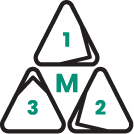Ever felt like your follow-up game is stuck in the mud? You're not alone. A staggering 44% of salespeople give up after just one follow-up. But here's the kicker: persistence pays off.
Why The Sales Follow-Up is Your Secret Superpower
Building Trust and Rapport: The Handshake of the Digital Age
-
Consistent Communication: Like a friendly neighbor who always waves hello, regular follow-ups show you care. It builds a relationship between you and the customer and gives you more of an insight into who you are selling to.
-
Personalized Approach: No one likes a canned email. Be the fresh chef of sales follow-ups. Make your email to order; personalize, customize, and make it resonate with whoever you are sending it to.
Trust and connection are the cornerstones of any relationship, and in the sales world, they are truly the bread and butter. By having consistent dialog and making your approach personal and friendly, you are going beyond trying to sell a product; you're building a real connection.
It's like planting a seed and watering it to bloom; there's no magic bean or quick fix, it takes persistence and personal touches to get the relationship blooming.
Nurturing Leads: Your Sales Garden
-
Timely Responses: Ever tried to go sunbathing in the winter? Timing is everything in life, and this is so true in sales. Nurture and grow your plants in the right season, and get a much higher yield at the end.
-
Providing Value: When you're growing plants, you will struggle to get the best results without using fertilizer. Think of this as using a value-based approach when nurturing your leads.
Building up and nurturing your leads is just like growing a bountiful garden. You wouldn't neglect your plants, so why would you ignore your leads? Being timely and responsive as well as using valuable insights are the photosynthesis of sales leads. With the right timing and care, you can turn these leads into loyal partnerships and successful customers.
Best Practices for Effective Sales Follow-Up: The MEDDPICC FRAMEWORK
The MEDDPICC framework is like your secret recipe. It not only results in that perfect dish each and every time, but it gives you a step-by-step outline of how to get there.
-
Economic Buyers: Identifying and engaging with the Economic Buyers is crucial in sales follow-ups. These are the individuals within the customer's organization who have the final say in the purchasing decision. Tailoring follow-up communications to address their specific needs and concerns can help in closing the deal.
-
Decision Criteria & Process: Understanding the Decision Criteria & Process is vital in sales follow-ups. This involves recognizing the customer's evaluation criteria and buying process, allowing the sales team to align their follow-up messages and actions accordingly. It ensures that the follow-ups are relevant and resonate with the customer's specific needs and preferences.
-
Implicate Pain: Sales follow-ups must focus on the customer's pain points that the product or service can solve. By reiterating how the offering addresses these specific issues, the sales team can make the follow-up communication more compelling and relevant.
-
Champion: Developing Champions within the customer's organization can be a powerful strategy in sales follow-ups. These are individuals who advocate for your solution within the customer's organization. Engaging with and supporting these Champions can help in maneuvering internal dynamics and getting closer to closing the deal.
-
Competition: Being aware of the Competition is essential in sales follow-ups. This includes understanding not only direct competitors but also other challenges such as alternative solutions or inertia within the customer's organization. Tailoring follow-up strategies to address these competitive factors can make them more effective.
Tech Tools: Your Digital arsenal
CRM Systems
Imagine having a digital sous-chef, always at your beck and call, ready to manage your sales follow-ups with precision and flair. That's what CRM systems like Salesforce bring to the table. They're not just robot butlers; they're your personal kitchen brigade, organizing contacts, tracking interactions, and serving up insights on a silver platter. With a CRM, you're not just cooking up sales; you're orchestrating a gourmet experience.
Automation
Scheduled emails and automation tools are the slow cookers of the sales world. You carefully prepare your ingredients (your messages), set the temperature (timing), and let it simmer to perfection. But unlike a set-it-and-forget-it crockpot, automation requires a watchful eye. It's about finding the right blend of timing, personalization, and relevance. With automation, you're not just throwing ingredients into a pot; you're crafting a delicacy that resonates with your audience's taste buds.
Analytics
In the kitchen of sales, you can't just eyeball your ingredients and hope for the best. Analytics tools are your measuring cups, ensuring that every follow-up is precisely calibrated for success. They provide the data-driven insights that allow you to tweak and refine your follow-up strategies, turning a good dish into a culinary masterpiece. With analytics, you're not just hoping for success; you're measuring, adjusting, and savoring every victory.
Collaboration Tools
Sales follow-ups are rarely a solo endeavor. Collaboration tools are the mixing bowls where ideas, strategies, and insights are blended to perfection. Tools like Slack or Microsoft Teams enable seamless communication, ensuring that everyone on the sales team is in sync and working towards the same delectable goal. Collaboration tools don't just facilitate communication; they foster a culture of creativity and innovation, where every team member adds their unique flavor to the mix.
Common Mistakes to Avoid: The Sales Blooper Reel
Over-Persistence: We all know that guy at the party who just won't stop talking, clinging to you like a shadow. In sales follow-ups, over-persistence is that unwelcome guest. It's not about bombarding your prospects with messages; it's about engaging them with timely, relevant communication. Don't be the party crasher; be the charming conversationalist who knows when to speak and when to listen.
Lack of Personalization: "Dear Customer" is the fruitcake of email openings – bland, generic, and often ignored. In the world of sales follow-ups, personalization is the key to unlocking engagement. It's about understanding your prospect's needs, preferences, and pain points, and crafting messages that resonate with them. Don't serve up a stale fruitcake; whip up a personalized delicacy that tantalizes their taste buds.
Ignoring Feedback: Imagine dancing with a partner who steps on your toes and then keeps repeating the same mistake. In sales, ignoring feedback is that painful misstep. Feedback, whether positive or negative, is a golden opportunity to learn, adapt, and improve. If your dance partner (the customer) signals discomfort, don't just plow ahead with the same moves; change your steps, adjust your rhythm, and create a dance that flows seamlessly.
Failing to Follow a Strategy: Chasing leads without a clear strategy is like embarking on a wild goose chase – aimless, exhausting, and often fruitless. A successful sales follow-up requires a well-defined roadmap, guiding you towards the right prospects at the right time with the right message. Don't wander aimlessly in the wilderness; follow the trail of insights, data, and planning that leads to success.
Neglecting the Human Touch: Automation is great, but a sales follow-up that feels robotic is like a cold, mechanical handshake. It lacks warmth, empathy, and connection. Even in the digital age, the human touch matters. It's about understanding emotions, building relationships, and connecting on a personal level. Don't be a robot; be a compassionate human who understands, cares, and engages.
If you make this mistakes, you could even find yourself on the sales bloopers and be on The Month End Show - if you want your LinkedIn outreach laughed at by the famous Randy Blonc, make sure to iron these out of your follow-up game.
Sales follow-up isn't just a task; it's an art, a science, and a party all rolled into one.
With the MEDDICC framework, you've got a treasure map to success. It's time to set sail, explore new horizons, and turn those leads into loyal customers.
Ready to dive deeper? Check out MEDDICC's resources for more insights, tips, and a sprinkle of sales magic.
FAQS
Q. Why is the sales follow-up considered a secret superpower?
A. Sales follow-up is a secret superpower because it builds trust, nurtures leads, and turns potential customers into loyal ones. It's the consistent and personalized communication that keeps you connected with your prospects, guiding them through the sales funnel.
Q. How does consistent communication build trust and rapport?
A. Consistent communication is like a friendly neighbor waving hello; it shows you care. By maintaining regular contact and personalizing your approach, you build a relationship that goes beyond selling a product, fostering trust and connection.
Q. What's the importance of timing in nurturing leads?
A. Timing in sales is like sunbathing in the right season; it's all about being at the right place at the right time. Responding promptly and providing value at the right moments helps you grow and nurture leads effectively, leading to higher success rates.





.png)





.png)
























%201.png)








.png)

.png)
